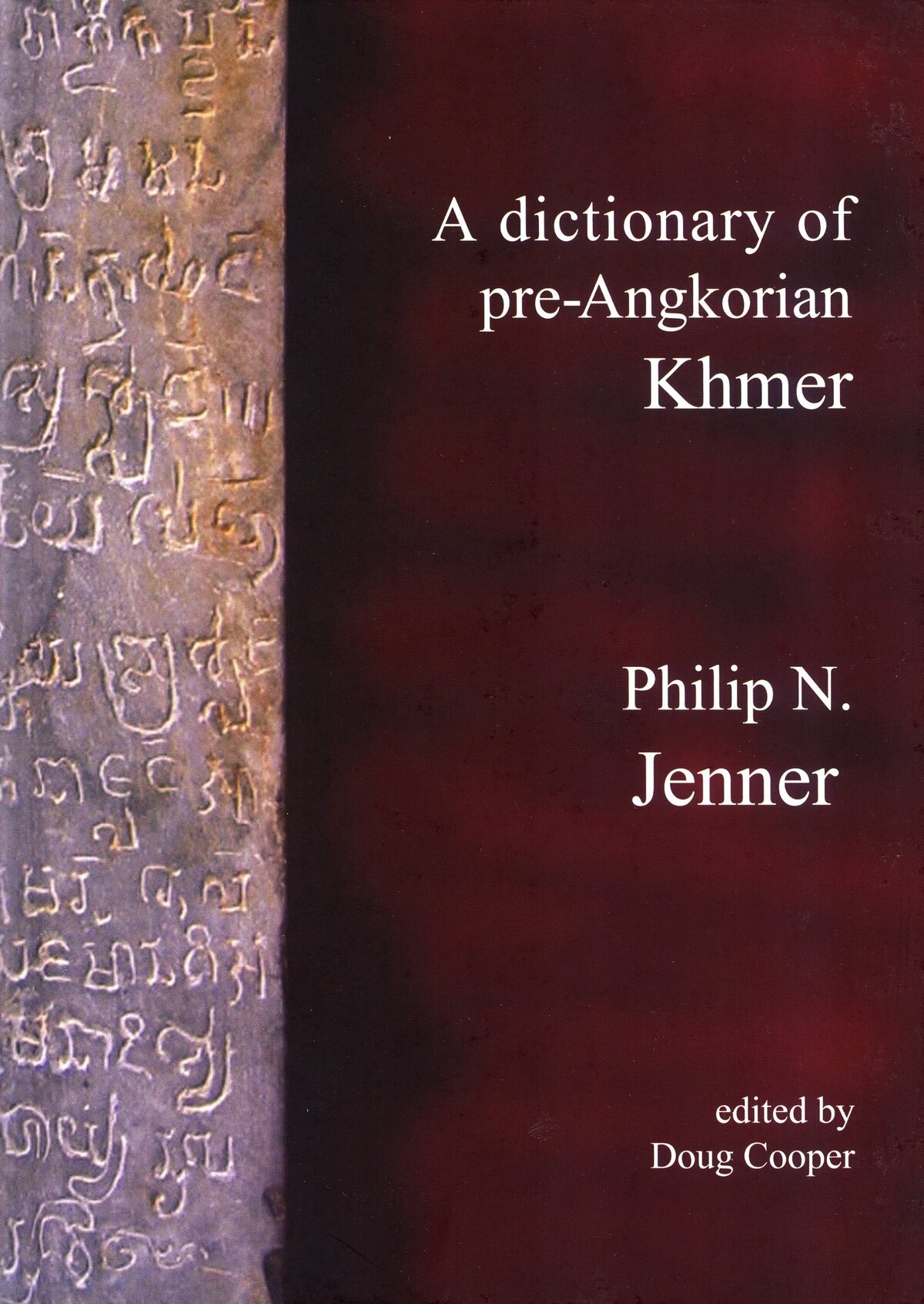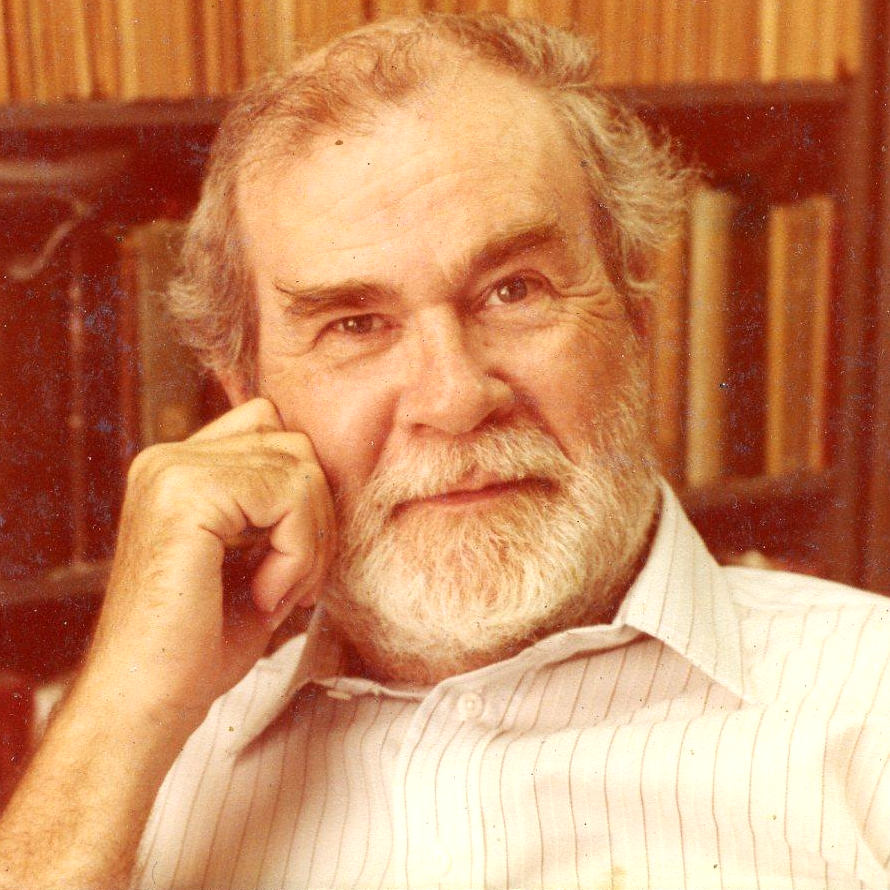A Dictionary of Pre-Angkorian Khmer
by Philip N. Jenner
The magnus opus of philologist and Old Khmer specialist Philip Jenner. Available here are the dictionaries of Angkorian Khmer (2) and Middle Khmer (3).

- Formats
- e-book, dictionary
- Publisher
- ed. Doug Cooper. Pacific Linguistics, Research School of Pacific and Asian Studies, The Australian National University, Canberra, Australia.
- Published
- 2009
- Author
- Philip N. Jenner
- Pages
- 648
- Languages
- English, Old Khmer
pdf 4.8 MB
One century and a half, the vast corpus of pre-Angkorean and Angkorean inscriptions is still explored, commented and submitted to enhanced transliterations and translations by Western scholars. Since the 1990s, Khmer native speakers have joined this effort, often with significative breakthroughs — let’s mention here the blog KhmerKhon, launched in 2012 and currently in the process of being upgraded.
From the Dictionary Introduction:
“If developments in linguistic science and computer technology in the last halfcentury have changed the face of lexicography, the test of a dictionary remains what it has always been: a good dictionary responds to the needs of its users. Whether the present work will so respond is for those who use it to say, but what follows approximates what I would have wished to have at my elbow when I embarked on the study of Old Khmer over forty years ago. It is based on work carried out between 1964 and 1980 and issued in preliminary form under the titles Lexicon of the Dated Inscriptions (1981) and Lexicon of the Undated Inscriptions (1982). The present work describes a corpus comprising all of the pre-Angkorian inscriptions published down to 1966 together with some thirty others recovered and published after that year. Included are several thousand proper nouns, these being largely excluded from my Angkorian dictionary. I hasten to add that for reasons referred to hereafter the dictionary falls far short of the standard I should like to have achieved.
The term Old Khmer as commonly used gives the impression that the inscriptions constitute a fair specimen of the language down to the early 15th century. This impression is surely false, and we should more accurately speak of
Epigraphic Khmer. The language that has come down to us was a sophisticated documentary idiom used by a small educated élite. Its grammar was probably not affected by cultivation in any significant way, but it addresses a narrowly limited range of themes. Its lexicon is therefore an incomplete reflection of Old Khmer. It must be supposed that thousands of items are missing from the surviving vocabulary. Silence reigns, for example, over the domestic and social life of the times, over much of political and military affairs, agriculture, commerce, and the arts and crafts.
With what we have left of Old Khmer one might be hard put to write a simple letter to a friend or report a common happening. This arises from the nature of epigraphy itself and cannot be taken as an indicator of impoverishment. The purposes for which the inscriptions were put in place make their limitations inevitable; within the bounds of those purposes the lexicon is admirably rich, but what is left of Old Khmer is surely only a small part of a language imperfectly represented. This circumstance is the principal reason for the emphasis I place on proper nouns, the analysis of which offers a way of recovering vocabulary otherwise lost.
The present dictionary could never have been attempted without the work of my predecessors, and the magnitude of my debt to them will be apparent to all who use it. Its chief inspiration is necessarily the heritage of George Coedès (1886−1969) which culminated in Inscriptions du Cambodge, which will long remain the foundation of Old Khmer studies as laid down and illuminated by his remarkable intellect, the breadth of his interests, his insight, and his imagination.”
See also Philip Jenner’s online Manual of pre-Angkorian Khmer with Grammatical Notes: The Dated Inscriptions.
- The dictionary is extended and corrected online here. This site explores and maintains Prof. Phillip Jenner’s Dictionary of Pre-Angkorian Khmer (1) and Dictionary of Angkorian Khmer (2) (Pacific Linguistics, 2009). It also serves as a test site for two new projects: — the Dictionary of Middle Khmer (3) (Pacific Linguistics, Canberra, 2011), and — the forthcoming Corpus of Khmer Inscriptions. It also offers the possibility of searching Khmer or Thai resources in SEAlang Library.
- ADB input: the dictionary is dedicated “For Chhany”, without doubt Chhany Sak-Humphry, who was Dr. Jenner’s student for several years at University of Hawa’i at Manoa.
Tags: dictionaries, Old Khmer, linguistics, philology, etymology, Khmer language, lexicography, pre-Angkorean
About the Author

Philip N. Jenner
Philip Norman Jenner (16 Oct 1921, Seattle, USA — 4 Jan 2013, Olympia, USA) was a Professor Emeritus of Cambodian and Southeast Asian linguistics, author of several dictionaries and grammar manuals of Old and Middle Khmer.
At age 11, he discovered his passion for ancient languages when learning Armenian with and an Armenian couple living in his neighborhood, then learnt Latin and Greek with teacher Charles Alban Taylor, and then studied Slavic languages and Oriental Studies at University of Washington. During World War II, he was assigned to the US Army Japanese Language School at the University of Michigan, and later to the Military Intelligence Service Japanese Training School in Minnesota. Working under under General MacArthur in Japan, he developed his passion for Far East cultures, and married the daughter of a Japanese florist settled in Seattle, Miyo Marie Inouye, in 1947.
Later on, Janner attended the Pali and Sanskrit courses at University of Chicago, and earned his PhD from the University of Hawaii, Department of Indo-Pacific Languages, whree he became one of the world’s foremost authorities on Cambodian and Old Khmer, working with noted Khmer linguists Saveros Pou.
Retired in 1984, Philip Jenner furthered his many years of scholarship on the inscriptions of Cambodia. His last work, finished just two months before his death at age 91, was a translation from the Dutch of an Old Balinese dictionary.
Among his publications, Sealang.net makes available online the following works:
- “Observations on Old Khmer man”, in The Mon-Khmer Studies Journal, vol. 20, pp. 1 – 10.
- “A note on lexical replacement in Khmer”, in The Mon-Khmer Studies Journal, vol. 21, pp. 179 – 184.
- “The form /syan/in Angkorian Khmer”, in Austroasiatic Languages, Essays in honour of H. L. Shorto, ed. J.H.C.S. Davidson, pp. 227 – 240. School of Oriental and African Studies, University of London.
- Jenner, P. and Pou, S. 1980 – 1981, “A lexicon of Khmer morphology”, in The Mon-Khmer Studies Journal, vol. 9 – 10, pp. 1 – 517.
- “Review Article: Robert K. Headley Jr, Kylin Chhor, Lam Kheng Lim, Lim Hak Kheang, Chen Chun: Cambodian-English Dictionary”, 1978, in South-east Asian Linguistic Studies Vol. 4, ed. N.D. Liem, vol. 4, pp. 431 – 436. Pacific Linguistics, the Australian National University.
- “A minor Khmer ethical text of early date”, in The Mon-Khmer Studies Journal, vol. 7, pp. 111 – 140.
- “Anomalous expansions in Khmer morphology”, in The Mon-Khmer Studies Journal, 1977, vol. 6, pp. 169 – 189.
- “The Relative Dating of Some Khmer CPA’PA*”, in Austroasiatic Studies, ed. P.N. Jenner et al., Honolulu, 1976,pp. 693 – 710. The University Press of Hawaii.
- “A Possible Case of Cosmological Gender in Khmer”, in Austroasiatic Studies, ed. P.N. Jenner et al., Honolulu, 1976, pp. 711 – 740. The University Press of Hawaii.
- “The value of i, ī, u and ū in Middle Khmer”, in The Mon-Khmer Studies Journal, 1976, vol. 5, pp. 101 – 133.
- “The value of i, ī, u and ū in Middle Khmer”, in South-east Asian Linguistic Studies Vol. 2, ed. N.D. Liem, vol. 2, 1976, pp. 39 – 72. Pacific Linguistics, the Australian National University.
- “The Development of the Registers in Standard Khmer”, in South-east Asian Linguistic Studies Vol. 1, ed. N.D. Liem, vol. 1, 1974, pp. 47 – 60. Pacific Linguistics, the Australian National University.
- “Observations on the Surin Dialect of Khmer”, in South-east Asian Linguistic Studies Vol. 1, ed. N.D. Liem, vol. 1, 1974, pp. 61 – 74. Pacific Linguistics, the Australian National University.
- “The Value of /au/and /ai/in Middle Khmer”, in South-east Asian Linguistic Studies Vol. 1, ed. N.D. Liem, vol. 1, 1974, pp. 157 – 174. Pacific Linguistics, the Australian National University.

